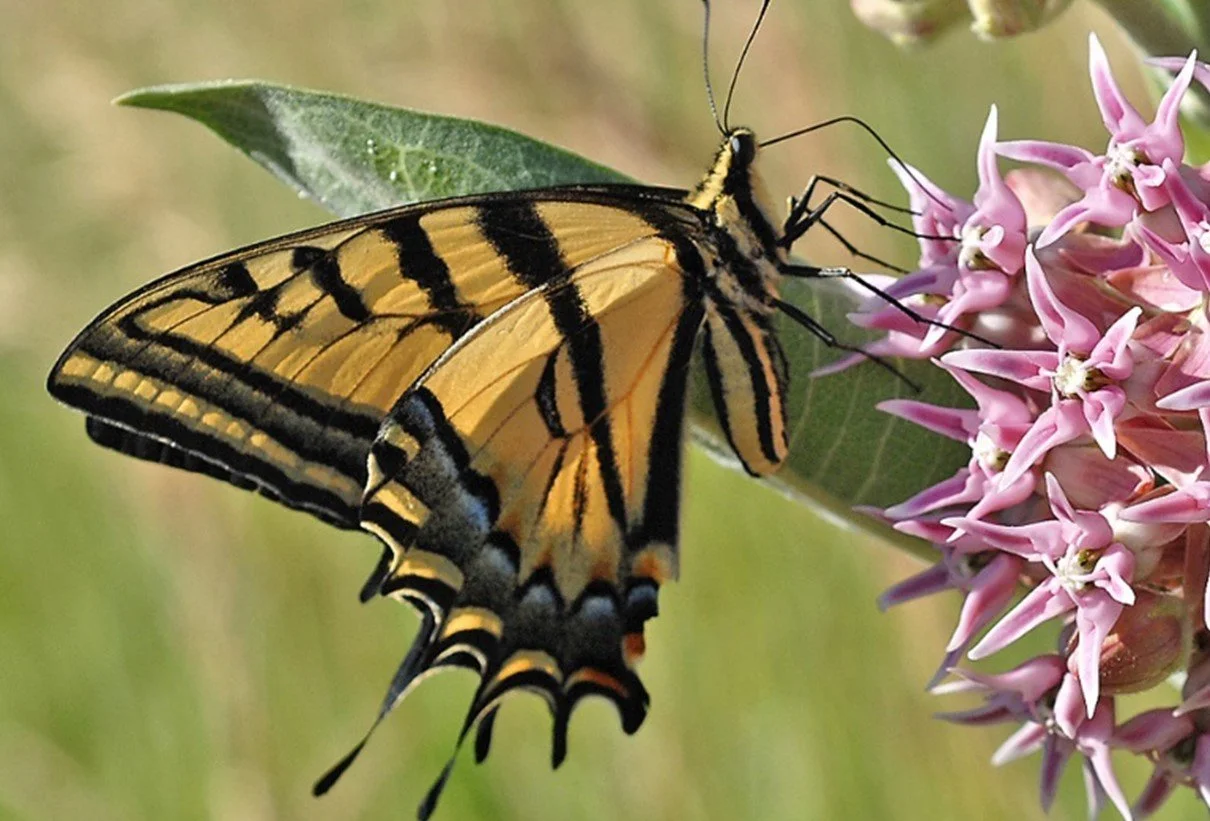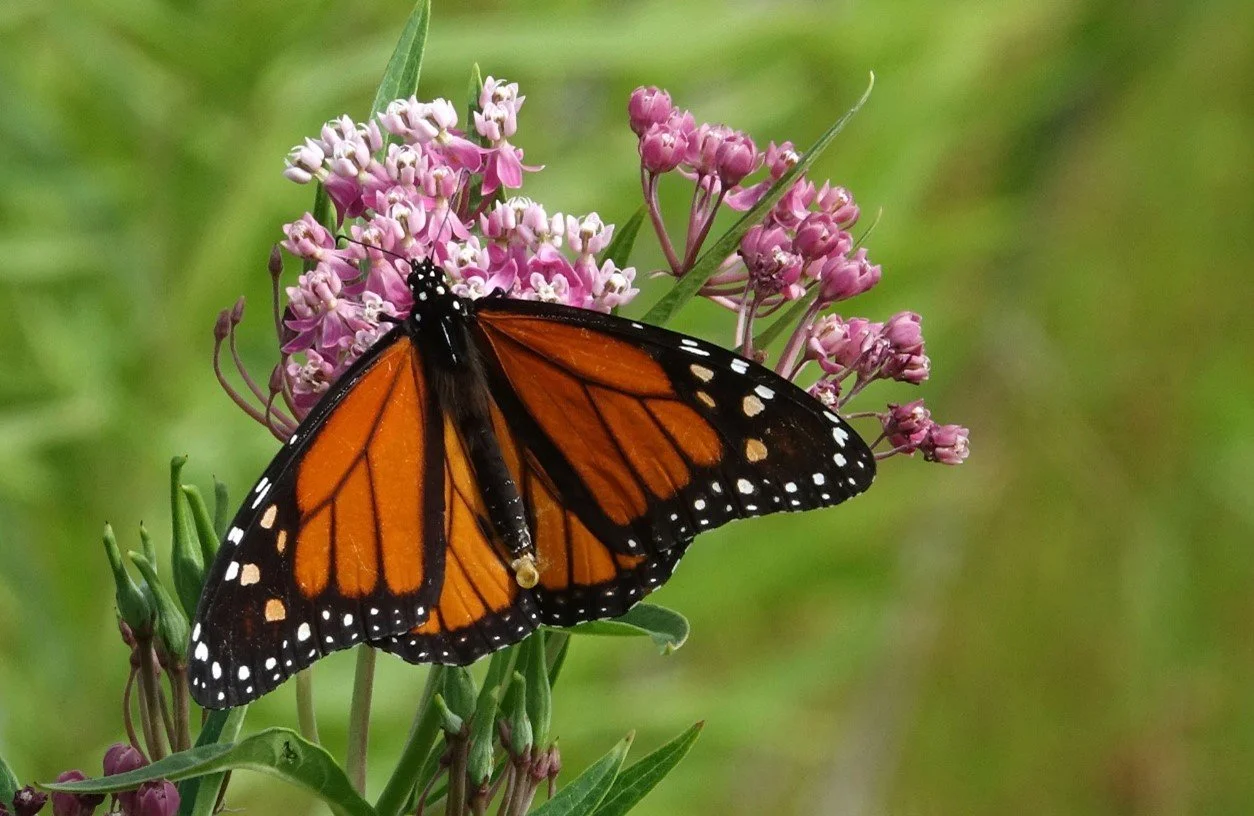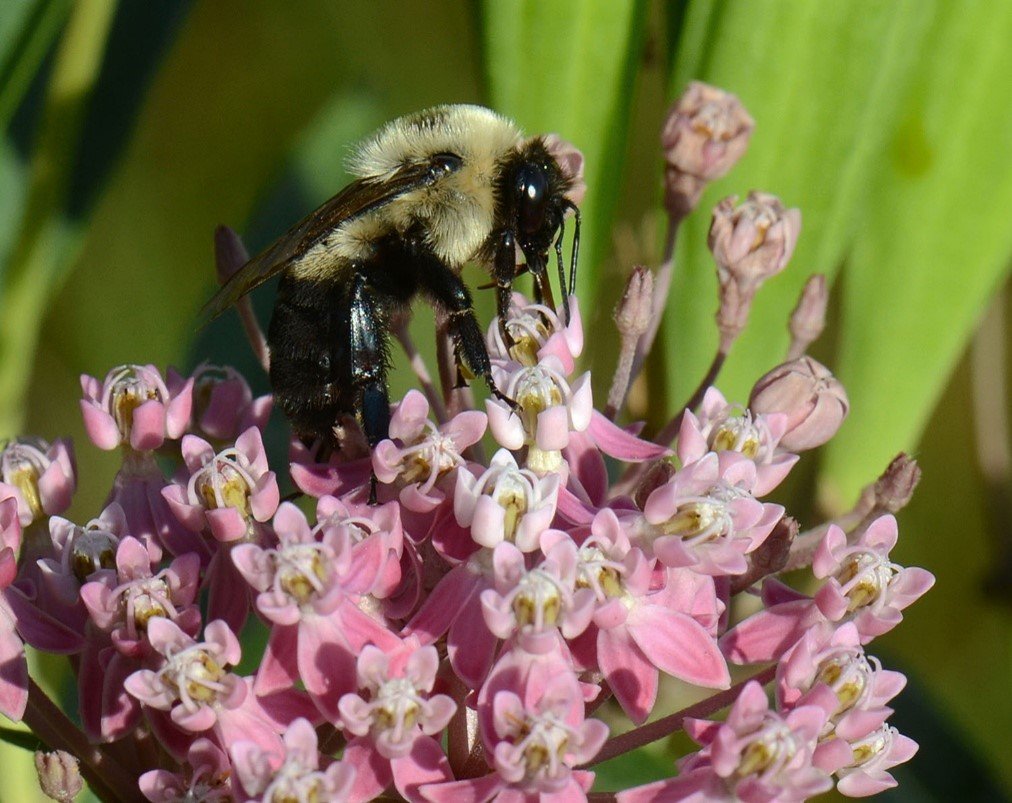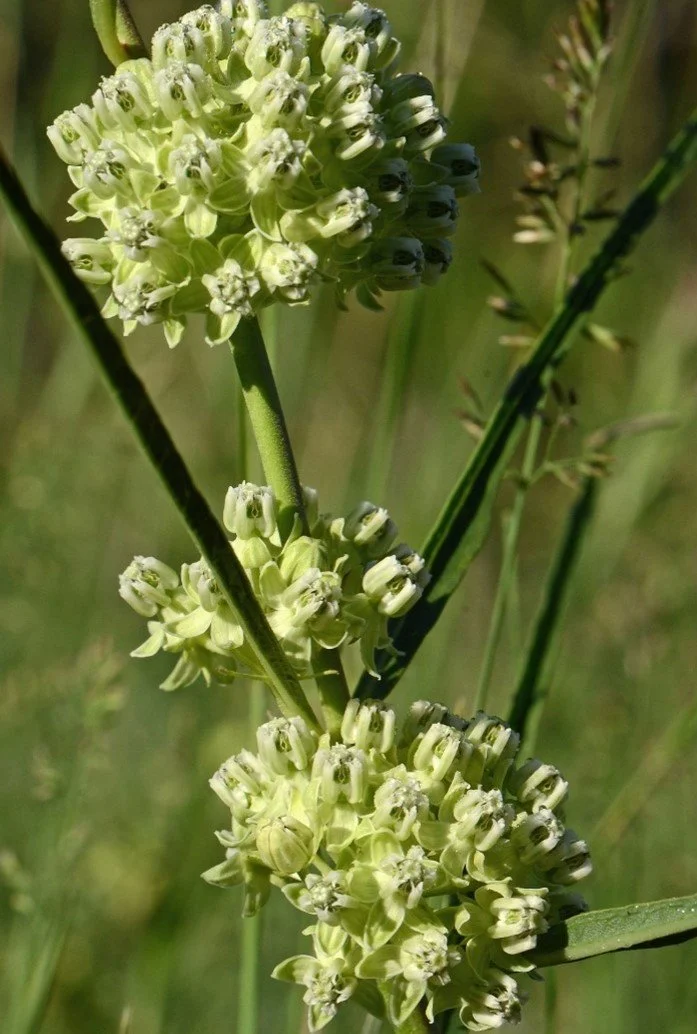July Nature Almanac: Milkweeds Flourish after Wet Spring
By Stephen Jones with Ruth Carol Cushman
July 2025
With frequent showers and consistently mild, frost-free conditions, Boulder County’s spring was one of the greenest in recent memory. Moisture-dependent wildflowers such as showy milkweed (Asclepias speciosa) emerged early and burst into bloom by the time our first hot summer days arrived in late June.
Boulder County supports at least seven native milkweed species, none of which are technically “weeds,” a term that usually denotes invasive non-natives. This common name for the plant genus may stem from the tendency for some of our more conspicuous milkweeds to thrive in roadside ditches and along irrigation channels bordering cultivated fields. “Milk” refers to the latex-like liquid that flows through milkweed stems and leaves.
The milky liquid contains toxic cardiac glycosides, which protect milkweeds from overgrazing by herbivores and insects. Feeding monarch butterfly caterpillars, should they survive the first 24 hours of life when many of them drown in milkweed latex, learn to feed on portions of the leaves that contain just enough of the latex to render them inedible to most birds. This attribute is passed on to the adult monarchs, providing a natural life insurance policy that enables them to fly more than 1500 miles each fall to central Mexico to overwinter.
Despite their toxicity, milkweeds attract a variety of foraging mammals and insects. Cattle munch on the sweet-smelling blossoms, while honeybees, bumblebees, and a variety of beetles sip the nectar.
In early summer, milkweed patches in meadows along South Boulder Creek and Saint Vrain Creek are among our favorite places to photograph insects. Try the South Boulder Creek and Boulder Tallgrass State Natural Areas, on either side of SH 93 just south of Boulder, or Golden Ponds Nature Area in Longmont.
Two-tailed swallowtails, which typically lay their eggs on chokecherries, other wild cherries, and green-ash, rarely pass up the opportunity to sip nectar from fragrant showy milkweed blossoms. Photo by Stephen Jones.
This recently emerged male monarch (note the chrysalis remnant at the tip of his abdomen) has already begun sipping nectar from a swamp milkweed (A. incarnata) growing in the South Boulder Creek State Natural Area. Photo by Stephen Jones
Though monarchs lay their eggs exclusively on milkweeds, their relationship with these semi-toxic plants is far from mutualistic. Within minutes after a recently hatched monarch caterpillar begins to munch on the leaves of some milkweed plants, the plants begin emitting volatile organic compounds that attract female wasps who lay their eggs in the bodies of monarch caterpillars. The wasp larvae eventually consume the caterpillars from the inside out.
Bumblebee on Swamp Milkweed. Photo by Stephen Jones.
Grizzled bumblebees also relish milkweed nectar. Their spiny legs are perfect vehicles for transporting pollen from one flower to another. Their legs get caught on sticky white, thread-like, pollen-bearing structures called translators (visible in the photo), and when the bumblebees take off, they may carry a translator and a load of pollen with them—if they’re lucky. We’ve found dead bumblebees and honeybees who got caught up in the blossoms and couldn’t break free.
This long-horned beetle was sipping nectar from a milkweed blossom within the Boulder Tallgrass State Natural Area east of SH 93. Photo by Stephen Jones
Beetles also unwittingly carry pollen from one milkweed flower to another.
While appearing to attract fewer insects, plains milkweeds (A. pumila) thrive in wet areas of our foothills grasslands). Photo by Stephen Jones.
Green milkweed (A. viridiflora) also grows in our foothills grasslands, usually blooming in June and July. Photo by Stephen Jones.
Other July Events
Golden Eagle young fledge from cliff nests in the foothills and high mountains and from widely scattered tree nests on the plains.
White-tailed Ptarmigan chicks, under parental supervision, hunt for insects.
Pika start making hay piles and continue until snow covers the ground.
Least chipmunks are born and leave the nest about four weeks later.
At dusk, fireflies flash on and off in wet meadows on the plains while bobolinks conduct melodic aerial displays overhead.
Firefly displaying in early July. Photo by Randy Gietzen.
Nature Almanac is a monthly series by Stephen R. Jones and R. Carol Cushman, along with other guest contributors. Ruth Carol Cushman and Stephen Jones are authors of A Field Guide to The North American Prairie (Peterson Field Guides) and Wild Boulder County: A Seasonal Guide to the Natural World.







